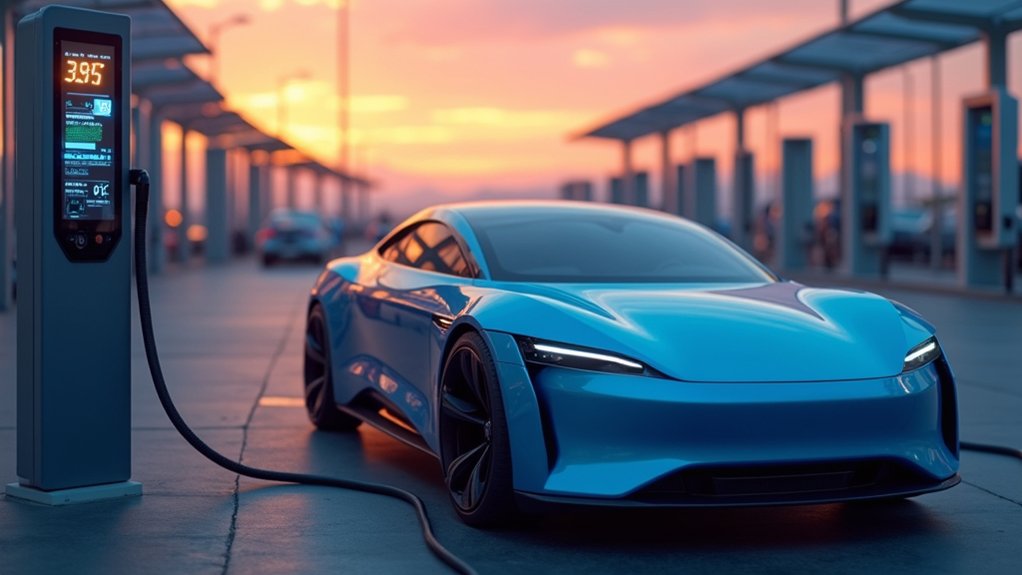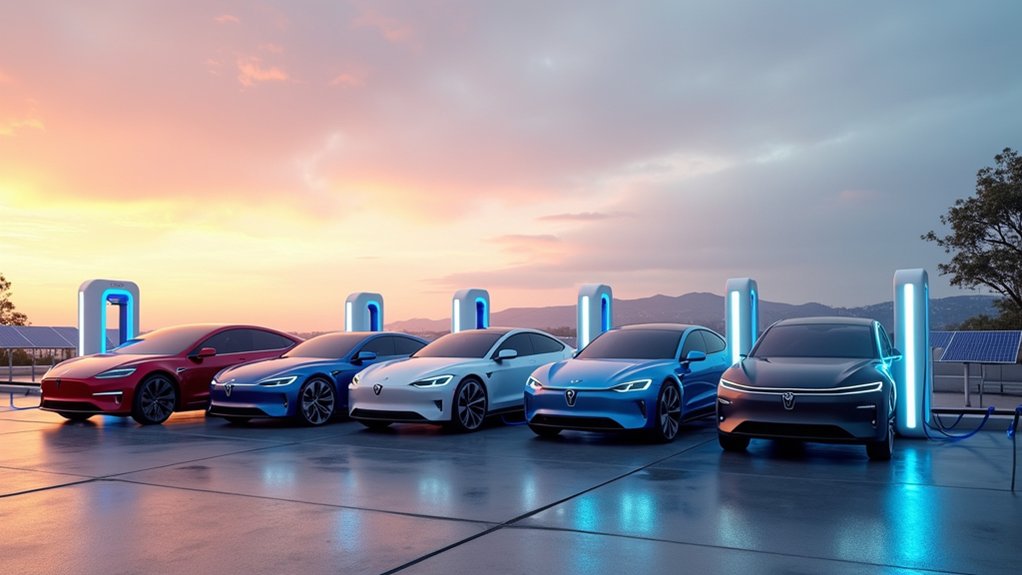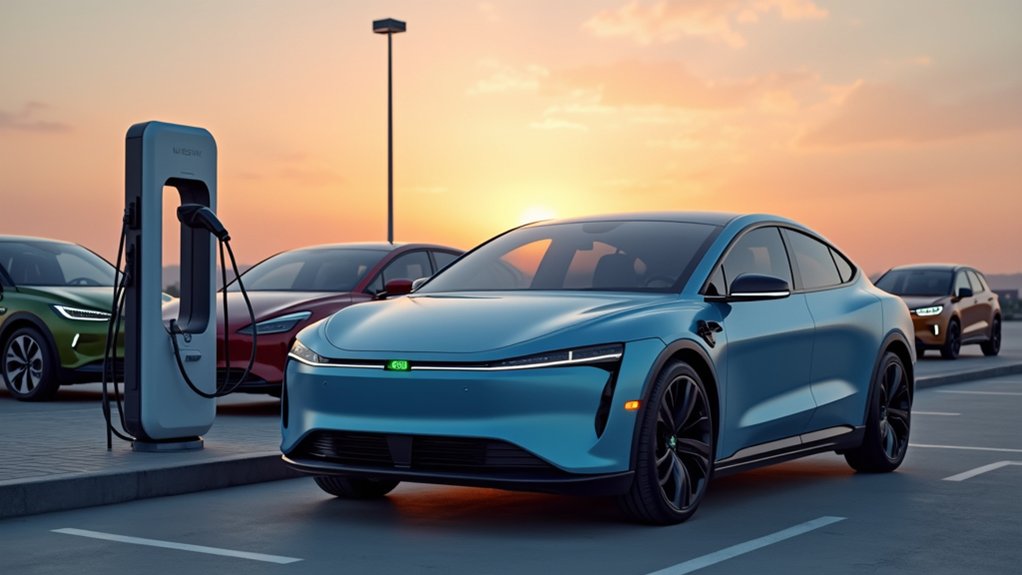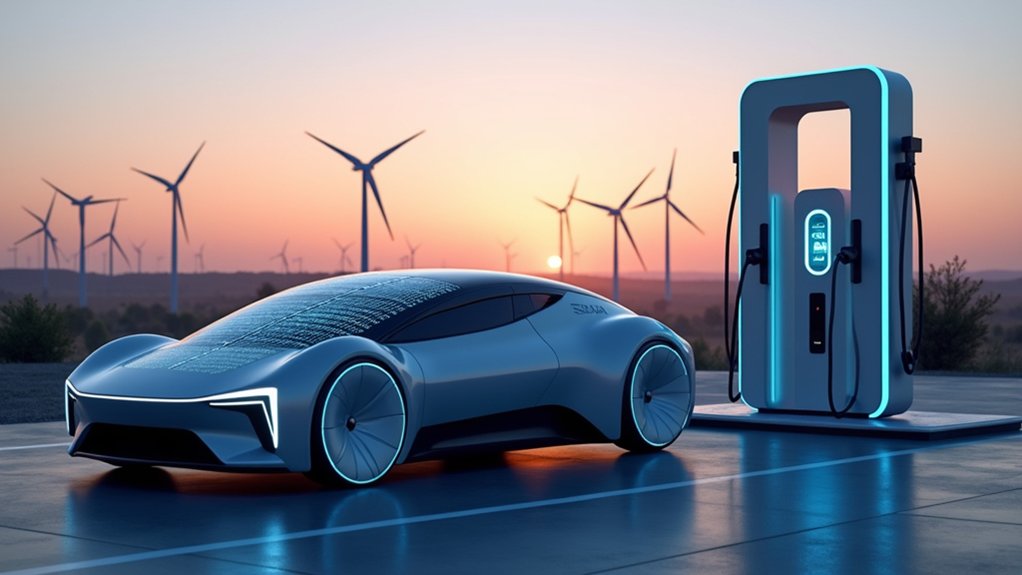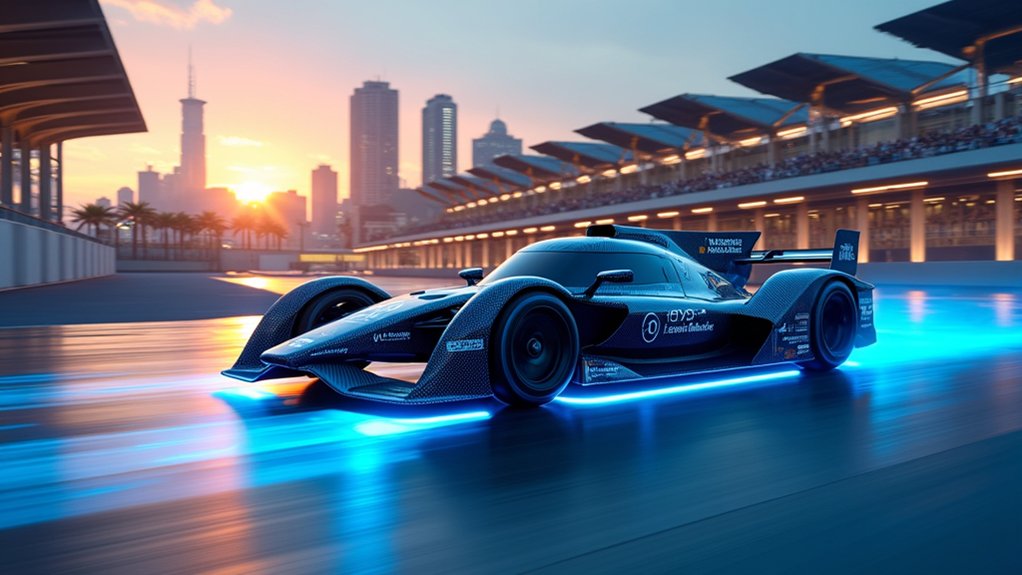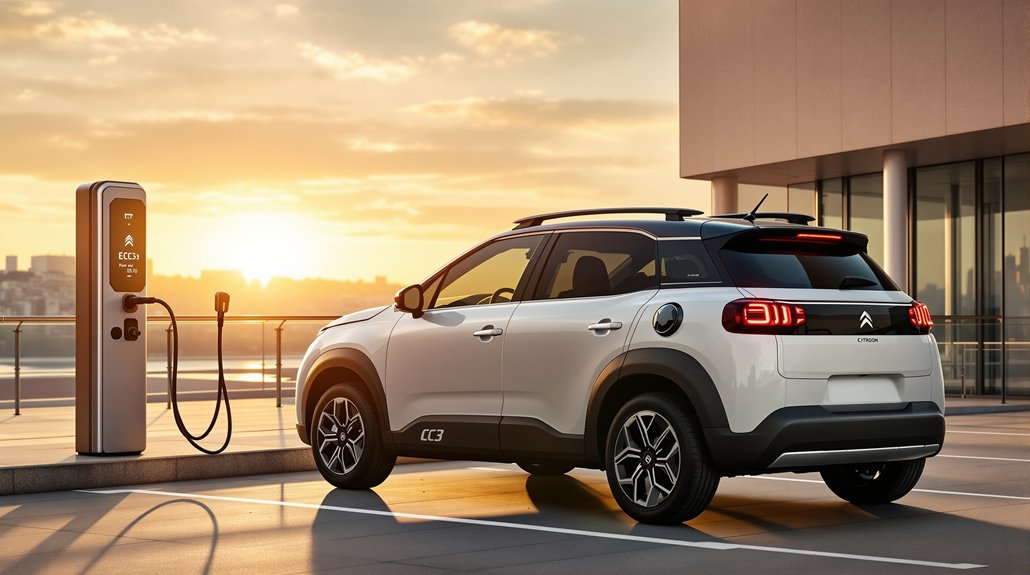Electric vehicles combine zero-emission powertrains with sophisticated battery systems to deliver sustainable transportation. Modern EVs feature high-capacity lithium-ion batteries offering ranges up to 400 miles, regenerative braking, and vehicle-to-grid capabilities. While initial costs exceed conventional vehicles, lower operational expenses and government incentives offset the investment. Public charging infrastructure includes Level 1 (120V), Level 2 (240V), and DC fast charging options. The evolution of solid-state batteries and expanding networks signals an electrifying future ahead.

As electric vehicles continue transforming the automotive landscape, understanding their core technology and infrastructure becomes essential for both prospective buyers and industry observers. EVs operate through sophisticated powertrains comprising high-capacity traction battery packs, electric motors, and advanced power electronics controllers, delivering zero tailpipe emissions while maintaining impressive performance capabilities. Public charging networks have expanded significantly across major highways and urban centers, making long-distance travel increasingly feasible. Government incentives play a crucial role in expanding charging infrastructure by encouraging businesses to invest in new stations.
The heart of modern EVs lies in their lithium-ion battery technology, which has seen remarkable advancement with range capabilities increasing 200% over the past decade. These powerhouses store and deliver energy efficiently, while regenerative braking systems recapture kinetic energy during deceleration. The DC/DC converter transforms high-voltage battery power into low-voltage electricity to support vehicle accessories and systems. The integration of vehicle-to-grid technology allows EVs to function as mobile power banks, feeding electricity back to homes or the power grid when needed.
Advanced lithium-ion batteries and regenerative systems make modern EVs powerful energy hubs, capable of both efficient storage and power distribution.
Charging infrastructure has evolved to accommodate various charging speeds and user preferences. The hierarchy begins with Level 1 (120V) home charging, progresses to more practical Level 2 (240V) systems, and peaks with DC fast charging stations capable of delivering considerable range in minutes. The emergence of wireless charging technology promises to eliminate the hassle of cable management, though widespread adoption remains in progress.
Environmental benefits of EVs extend beyond zero tailpipe emissions. When powered by renewable energy sources, these vehicles greatly reduce lifetime carbon footprints compared to internal combustion alternatives. Industry efforts to enhance battery recycling and minimize rare earth material usage further strengthen their environmental credentials.
While initial purchase costs remain higher than conventional vehicles, the total cost of ownership often proves favorable due to reduced fuel and maintenance expenses. Government incentives, including tax credits and subsidies, help offset upfront costs. The technology continues to evolve, with promising developments in solid-state batteries poised to deliver higher energy density and faster charging capabilities.
Challenges persist, particularly regarding charging infrastructure in rural areas and battery performance in cold weather. However, ongoing technological advancements and expanding charging networks continue to address these limitations, solidifying EVs’ position as the future of personal transportation.
Frequently Asked Questions
How Long Does It Take to Install a Home Charging Station?
A standard Level 2 home charging station installation typically takes 2-4 hours when performed by a licensed electrician.
However, homes requiring electrical panel upgrades or extensive modifications may need additional time.
Installation duration varies based on factors including existing electrical capacity, mounting location, and whether outdoor weatherproofing is needed.
Local permit requirements and site-specific complexities can extend the timeline to several days.
Can I Tow a Trailer or Boat With an Electric Vehicle?
Many EVs can tow trailers and boats effectively, with capabilities ranging from 1,500 to 11,000 pounds depending on the model.
The Rivian R1T leads with an 11,000-pound capacity, while the F-150 Lightning and Silverado EV manage 10,000 pounds.
However, towing reduces driving range by up to 50%, requiring careful trip planning.
Most EVs need specific towing packages, and charging stations often aren’t trailer-friendly, necessitating unhitching before charging.
How Does Extreme Weather Affect Electric Vehicle Battery Performance?
Extreme weather greatly impacts EV battery performance in both cold and hot conditions.
Cold temperatures can reduce driving range by 30-50% due to slower chemical reactions and increased internal resistance.
Hot weather accelerates battery degradation while forcing the Battery Management System to limit charging speeds.
Climate control systems further strain the battery, with heating in winter and air conditioning in summer reducing available energy for propulsion by up to 17%.
What Happens if My Electric Car Runs Out of Power Mid-Journey?
When an electric vehicle depletes its power, it gradually loses functionality before coming to a complete stop.
Modern EVs initiate multiple warning systems and engage “limp mode” to preserve remaining charge.
Once fully depleted, the vehicle requires professional assistance or towing to the nearest charging station.
Complete battery drainage can potentially damage cell capacity, though built-in safeguards typically prevent serious harm through early intervention systems.
Are Electric Vehicles More Expensive to Insure Than Regular Cars?
Electric vehicles typically cost 44% more to insure than conventional gas-powered cars, with average monthly premiums of $357 versus $248.
This significant difference stems from EVs’ higher repair costs, expensive battery replacements, and specialized components.
While providers like State Farm and GEICO offer more competitive rates around $1,500 annually, the limited availability of qualified technicians and specialized parts continues to drive up insurance expenses.
